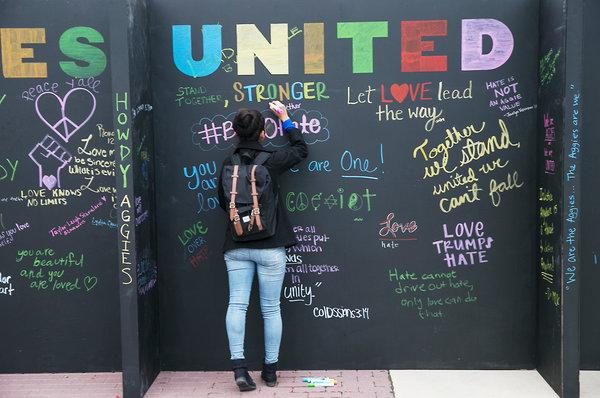
As a conservative-leaning professor who has long promoted a diversity of viewpoints among my (very liberal) faculty colleagues and in my classes, I was taken aback by the college's sponsorship of such a politically lopsided event. The email also piqued my interest in what sorts of other nonacademic events were being organized by the school's administrative staff members.
I soon learned that the Office of Student Affairs, which oversees a wide array of issues including student diversity and residence life, was organizing many overtly progressive events - programs with names like "Stay Healthy, Stay Woke," "Microaggressions" and "Understanding White Privilege" - without offering any programming that offered a meaningful ideological alternative. These events were conducted outside the classroom, in the students' social and recreational spaces.
The problem is not limited to my college. While considerable focus has been placed in recent decades on the impact of the ideological bent of college professors, when it comes to collegiate life - living in dorms, participating in extracurricular organizations - the ever growing ranks of administrators have the biggest influence on students and campus life across the country.
Today, many colleges and universities have moved to a model in which teaching and learning is seen as a 24/7 endeavor. Engagement with students is occurring as much - if not more - in residence halls and student centers as it is in classrooms. Schools have increased their hiring in areas such as residential life and student centers, offices of student life and success, and offices of inclusion and engagement. It's not surprising that many of the free-speech controversies in the past few years at places like Yale, Stanford and the University of Delaware have concerned events that occurred not in classrooms but in student communal spaces and residence halls.
Intrigued by this phenomenon, I recently surveyed a nationally representative sample of roughly 900 "student-facing" administrators - those whose work concerns the quality and character of a student's experience on campus. I found that liberal staff members outnumber their conservative counterparts by the astonishing ratio of 12-to-one. Only 6 percent of campus administrators identified as conservative to some degree, while 71 percent classified themselves as liberal or very liberal. It's no wonder so much of the nonacademic programming on college campuses is politically one-sided.
The 12-to-one ratio of liberal to conservative college administrators makes them the most left-leaning group on campus. In previous research, I found that academic faculty report a six-to-one ratio of liberal to conservative professors. Incoming first-year students, by contrast, reported less than a two-to-one ratio of liberals to conservatives, according to a 2016 finding by the Higher Education Research Institute. It appears that a fairly liberal student body is being taught by a very liberal professoriate - and socialized by an incredibly liberal group of administrators.
The severity of this trend varies among different types of academic institutions. My research found that two-thirds of administrators at public institutions and schools with religious affiliations self-identified as liberals, which was lower than the three-quarters of administrators at private, secular institutions who did. I found no real differences among school types, such as small, private liberal arts colleges as compared with large research universities. School ranking did make a small difference, with administrators at more selective institutions reporting a higher percentage of liberals than did lower-ranked schools.
The most pronounced difference was regional. New England has the most liberal college administrators in the nation, with a 25-to-one ratio of liberals to conservatives. The West Coast and Southeast have ratios of 16-to-one, whereas the Great Plains, the Rocky Mountains and the Great Lakes all have ratios closer to 10-to-one. The only region with anything close to a balanced ratio is the Southwest, with two-to-one.
This warped ideological distribution among college administrators should give our students and their families pause. To students who are in their first semester at school, I urge you not to accept unthinkingly what your campus administrators are telling you. Their ideological imbalance, coupled with their agenda-setting power, threatens the free and open exchange of ideas, which is precisely what we need to protect in higher education in these politically polarized times.



Reader Comments
to our Newsletter